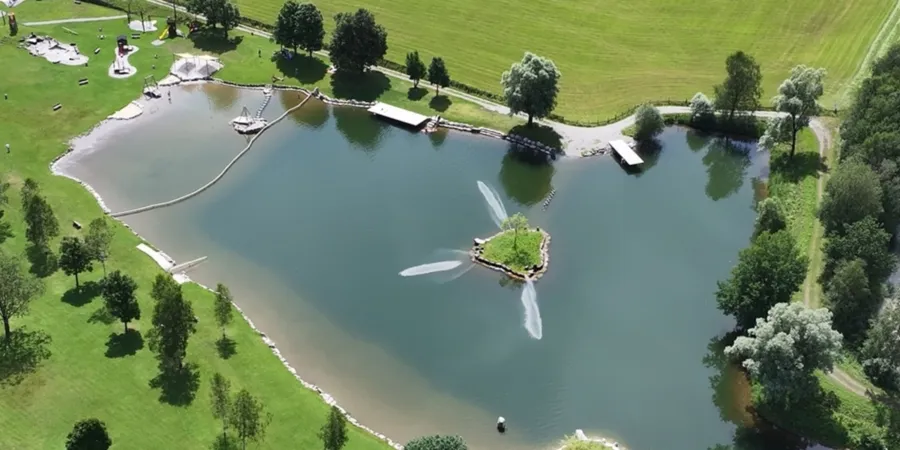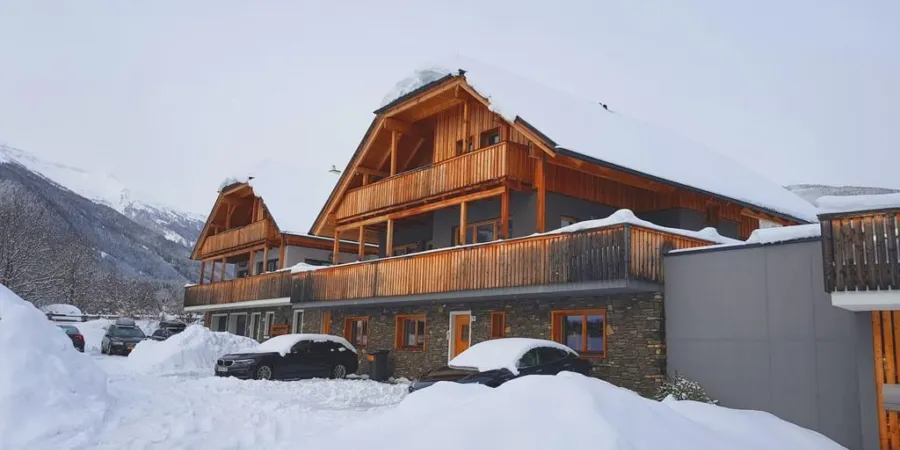Swimming and watersports in Austria!

Austria is generally known as a winter sports destination, but also in summer it offers a variety of opportunities for (refreshing) water activities and adventurous water sports. Whether it's swimming or fishing in the Durlaßboden reservoir, immersing yourself in the world of surfing, rafting, or canyoning, or discovering an ancient tradition at Prebersee, there's something for everyone in the summer. Explore all the options in this blog!
Watersports in Zillertal Arena
During the summer holidays in or around the Zillertal Arena, you can fully enjoy watersports at the Durlaßboden reservoir near Königsleiten. In the summer months, the temperature of this lake can rise to around 21 degrees. Here, you can surf, swim, pedal boat, or simply relax on the grassy shores of the reservoir, where there's also a playground for children and barbecue facilities. The reservoir is also home to Austria's highest-altitude surf school (at 1400 meters)!
Fishing
Fishing enthusiasts can also indulge themselves at the Durlaßboden reservoir near Königsleiten. From late May to early July, anglers can purchase day tickets and bait at Hotel Platzer.

Rafting
In Mayrhofen, just a 25-minute drive from Königsleiten, awaits a more adventurous activity: rafting, an adventure where you navigate the river's current in a rubber boat. These boats vary in length from 3.5 to 6 meters and are piloted by experienced guides who use paddles to steer. A raft accommodates 4 to 12 people, so you can always enjoy an unforgettable, adrenaline-filled ride with plenty of friends or family!Canyoning
Canyoning is a spectacular outdoor sport where you hike, swim, slide, and jump through a beautiful gorge, often with flowing water. Always do this under the guidance of an experienced guide. In Austria, there are various areas where you can find these gorges/canyons. The narrower the gorge and the more water flows, the more challenging the route becomes, which naturally increases the excitement and fun. So, each trip is unique and offers a new experience.For canyoning, it is necessary to wear a wetsuit to protect your body from the sharp and hard rocks, as well as from the cold water. The wetsuit provides sufficient protection against both the rocks and the cold. Additionally, wearing a helmet and sturdy, high hiking boots is mandatory to ensure good grip on the rocks and to protect your head. When canyoning, you must also always wear a harness and a descender device attached to your body, along with the necessary rope for rappelling. If you cannot climb or jump, you must be able to rappel. This means lowering yourself along a rope attached to your harness.

Badesee Hollersbach
In Salzburgerland, after splendid hikes, you can cool off in one of the many lakes with crystal-clear water. One example is the Badesee Hollersbach in the Mittersill-Hollersbach region, near Bramberg am Wildkogel and Mittersill. Children can enjoy themselves on the play equipment in and around the lake, while there's plenty for parents to do too. Grassy lawns have been laid out around the lake, where you can enjoy the sun, the lake, and the beautiful mountains all day long.Badesee Kirchberg
About a 45-minute drive from Bramberg am Wildkogel and Mittersill is another lake: Badesee Kirchberg. This lake is an impressive 13,000 m² and up to 4.5 meters deep. There's also a lovely heated pool by the lake for those who find the lake too cold for swimming. Besides the lake, you'll find extensive sunbathing lawns with plenty of trees for shade and a restaurant where you can order food and drinks.Prebersee
In other 'ChaletsPlus villages' like Mauterndorf, Mariapfarr, and Maria Alm, Prebersee sits at 1500 meters above sea level. Due to its depth of 10 meters, the Prebersee is almost always a pleasant cool-off spot.However, the Prebersee offers more than just refreshment. Every August, a unique sport called "Preberschiessen" is practiced here, a tradition dating back to 1834. During this activity, clay pigeons are shot over the lake, with participants having to hit the pigeons from a distance of about 120 meters, using the reflections of the pigeons on the water.














